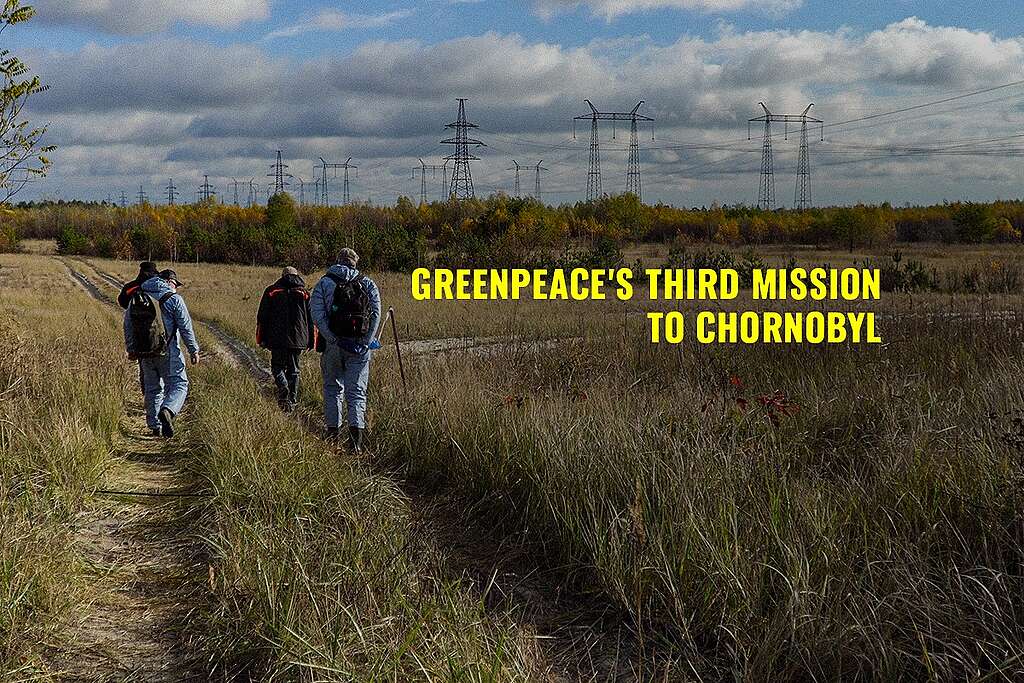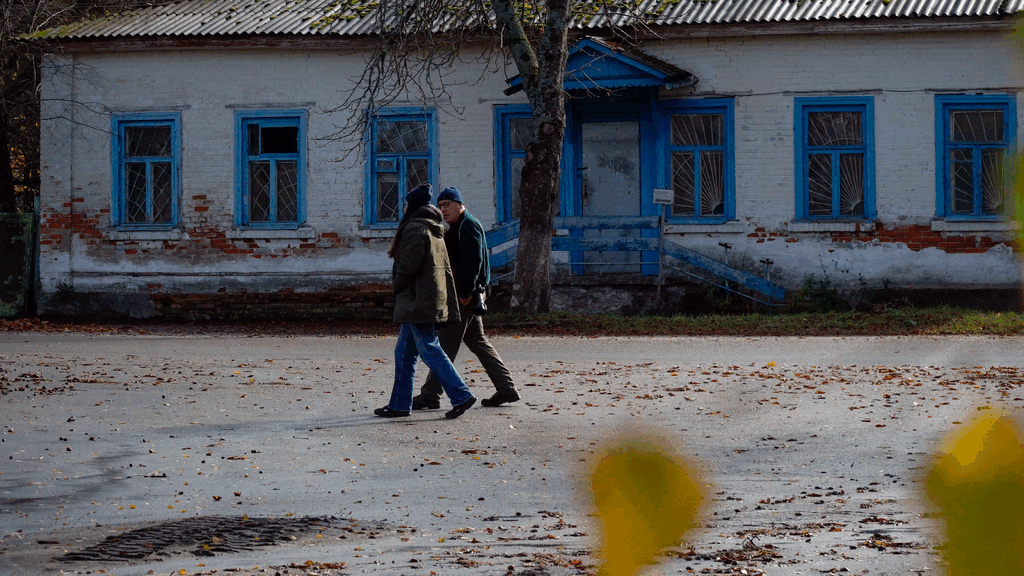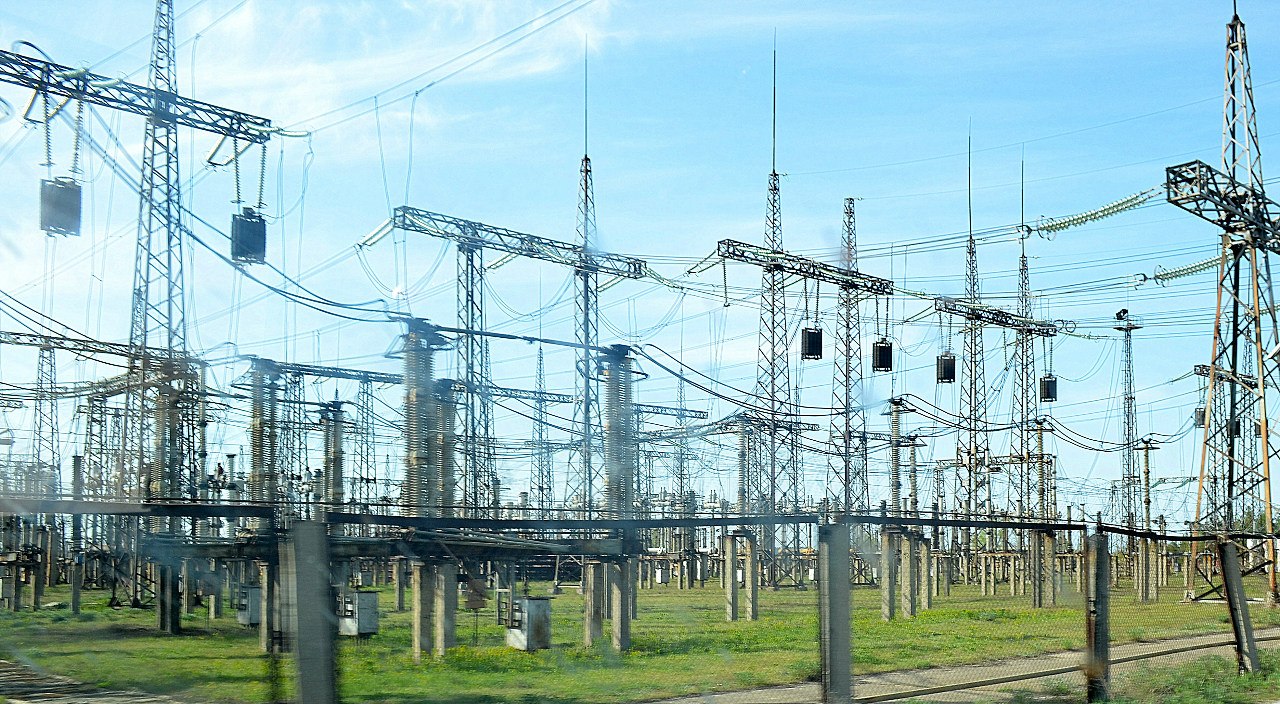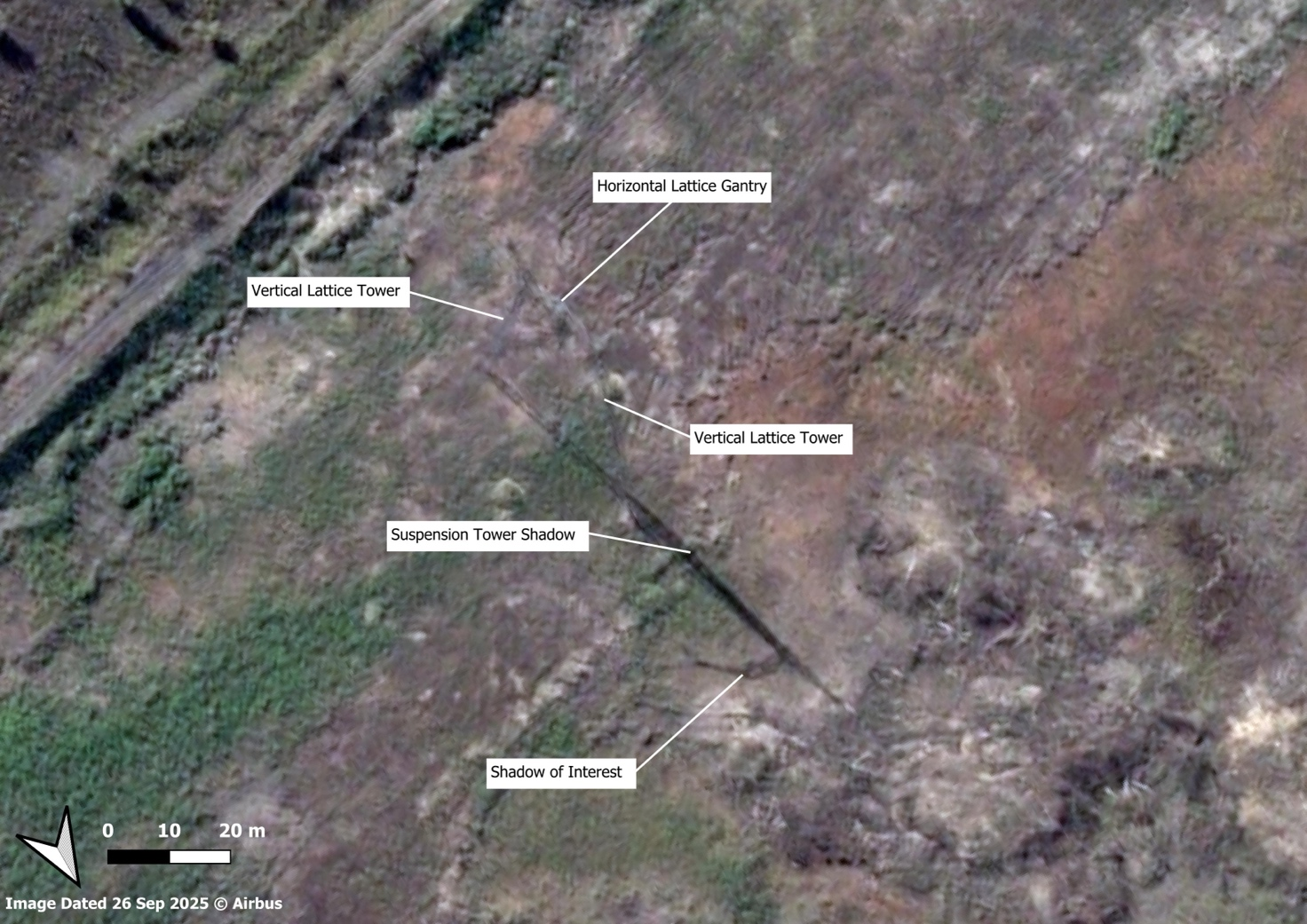
An international team led by Greenpeace Ukraine has completed its third extended mission to the Chornobyl Nuclear Power Plant and the Exclusion Zone since 2022. The visit, which was only made possible by the State Agency of Ukraine for Exclusion Zone Management, the Chornobyl Nuclear Power Plant (ChNPP), and the SSE Ecocentre, focused on two main objectives — supporting Ukrainian scientists studying radioactive contamination and assessing the damage from Russia’s February 2025 drone attack on the New Safe Confinement (NSC) structure.
During the mission, Greenpeace experts worked alongside the SSE Ecocentre and leading scientists from the Hydrometeorological Institute of the State Emergency Service of Ukraine and the National Academy of Sciences of Ukraine as they conducted research at the Chornobyl cooling pond — one of the most contaminated sites in the zone. The pond, built in the 1970s to cool the four Chornobyl reactors, still contains radioactive fuel particles from the 1986 disaster. Understanding how these particles behave in water and sediments is essential for long-term environmental safety.
To support this work, Greenpeace has funded the construction of a floating radiation survey platform, named H.B. Victory (Г.Б. Перемога). The platform will help scientists study radiation levels in the aquatic systems of the Chornobyl Zone over the coming years. The results of this collaborative research will be published in 2026 — on the 40th anniversary of the Chornobyl disaster.


All photos: Pavlo Siromenko
As part of the mission, the Greenpeace nuclear team was granted access to the Chornobyl plant itself, including units 3 and 4, and the NSC Arch that covers the destroyed reactor. The 2025 Russian drone attack on the NSC caused serious structural damage — breaching the roof, triggering a fire that burned for three weeks, and disabling key safety systems. Temporary repairs have been made, but the options for repair remain uncertain and with costs potentially in hundreds of millions of euros.
This was the third Greenpeace extended mission to Chornobyl since Russia’s full-scale invasion, and the first on-site assessment inside the NSC since the February 2025 attack. Greenpeace will continue to investigate Russia’s war crimes against Ukraine’s nuclear and energy infrastructure — including at Chornobyl and the Zaporizhzhia reactor site — and to demand strong international sanctions against Rosatom, the criminal Russian state nuclear corporation.
“Ukraine’s nuclear sites must stop being targets in Russia’s war. The international community must act to protect them — and to hold Russia accountable for its deliberate nuclear threats,” said Shaun Burnie, senior nuclear specialist with Greenpeace Ukraine.

Greenpeace wishes to express its deep appreciation to the State Agency of Ukraine for Exclusion Zone Management, the Chornobyl Nuclear Power Plant (ChNPP), the SSE Ecocentre, and the Hydrometeorological Institute for making the Greenpeace mission possible.



